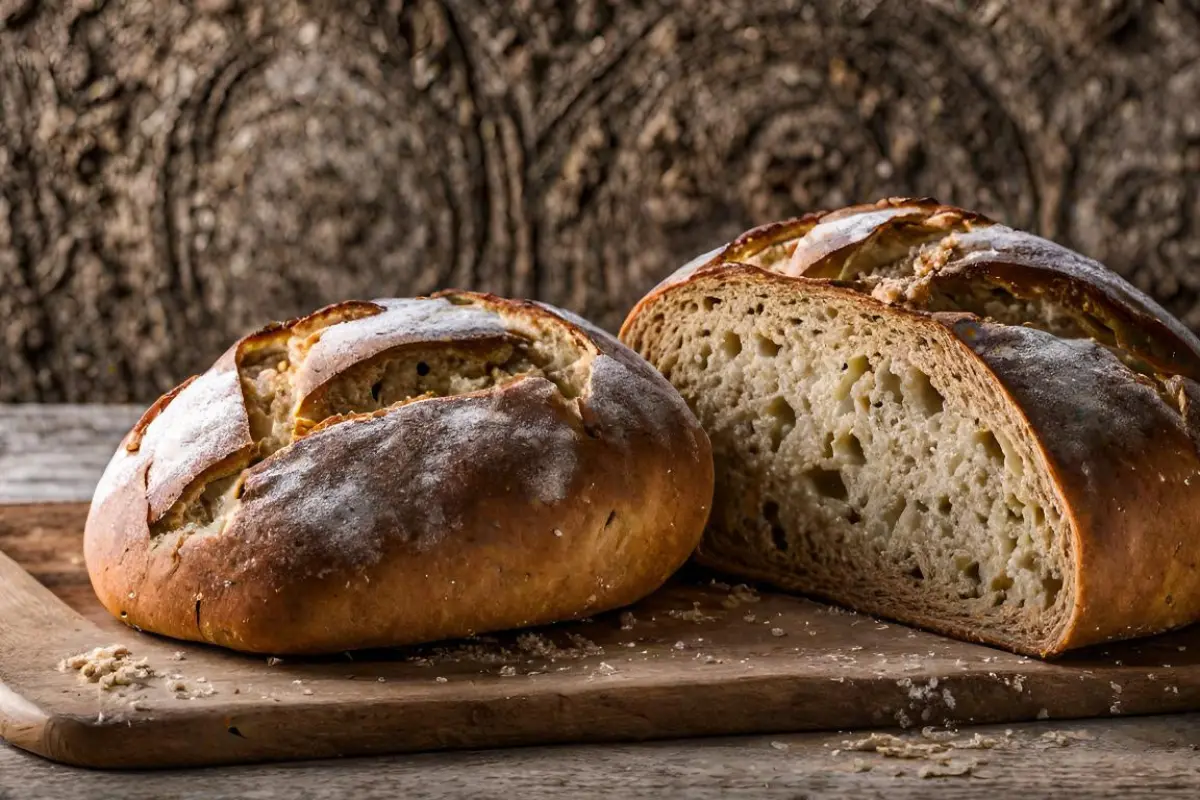Introduction to the World of Tuscan Bread
Tuscan bread, a staple of Italian cuisine, is more than just a food item; it’s a symbol of a rich culinary tradition. This article delves into the unique world of bread, exploring its history, preparation methods, and its role in Italian dishes. We’ll uncover the secrets behind its saltless recipe, learn about various Tuscan bread recipes, and understand how it complements other Italian specialties. Whether you’re a baking enthusiast or a lover of Italian culture, this journey through the art of Tuscan bread-making is sure to enrich your culinary knowledge.
The Unique Charm of Tuscan Bread
Tuscan bread, or Pane Toscano, stands out in the world of Italian breads, primarily due to its distinctive lack of salt. This unique characteristic dates back centuries and is steeped in history and culture. The absence of salt in bread isn’t just a matter of taste, but a reflection of its historical context, making it a fascinating subject for both food historians and culinary enthusiasts.
Understanding Tuscan Bread’s Saltless Tradition
The tradition of making This bread without salt is rooted in its historical and economic background. This practice dates back to the Middle Ages, when salt was a valuable commodity and heavily taxed. The Tuscans, known for their resourcefulness, adapted their bread recipe to do without salt. This adaptation has since become a hallmark of Tuscan culinary identity, influencing the region’s cuisine in profound ways.
The texture and flavor of Tuscan bread make it an ideal companion for the bold flavors of Tuscan dishes. Its dense, chewy texture and subtle taste perfectly complement the region’s rich stews, savory cheeses, and aromatic olive oils. The bread’s simplicity allows it to absorb and enhance the flavors of these dishes, making it an indispensable part of the Tuscan dining experience.
In the next section, we’ll explore the historical roots of Tuscan bread, tracing its evolution from a humble peasant food to a beloved element of Italian cuisine. Stay tuned as we delve deeper into the rich history of this unique bread.
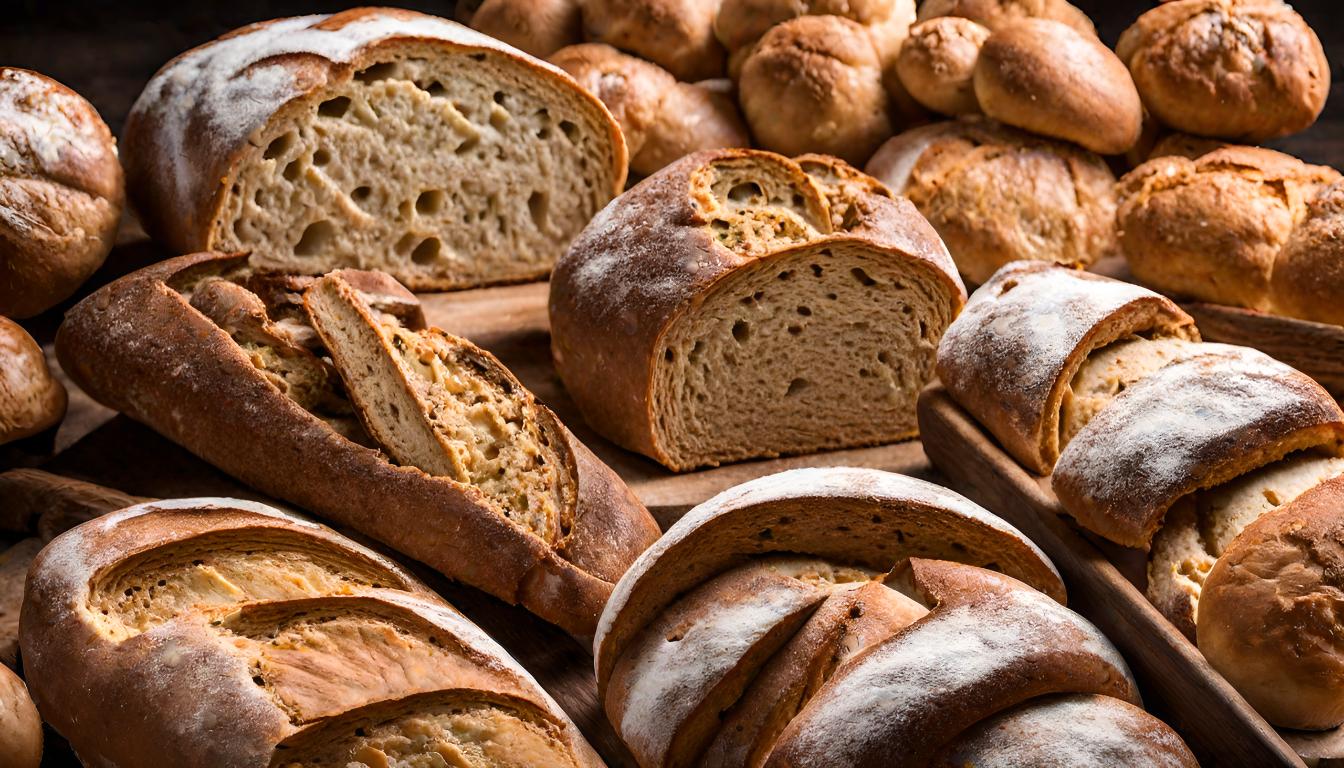
Historical Background
The Historical Roots of Tuscan Bread
Delving into the past, the story of Tuscan bread unfolds like a fascinating historical tapestry. This bread, now a symbol of Tuscan resilience and ingenuity, has its roots deeply embedded in the Middle Ages. The era was marked by economic strife and high salt taxes, leading to the birth of this unique saltless bread. This adaptation wasn’t just a culinary choice but a bold statement against the high salt taxes imposed by Pisa, which controlled the salt trade at the time.
Evolution of Tuscan Bread Over the Centuries
Over the centuries, Tuscan bread has evolved, yet it has steadfastly held onto its defining characteristic: the absence of salt. This evolution mirrors the changing socio-economic landscape of Tuscany. From a humble peasant food, it has risen to become a cherished part of Tuscan heritage and cuisine. Each era brought its own influences, shaping the bread’s methods of preparation and consumption. Today, it stands as a testament to the region’s history, a simple yet profound link to the past.
As we journey through the story of Tuscan bread, we not only uncover the layers of its rich history but also gain insight into the resilience and creativity of the Tuscan people. Their ability to turn a culinary limitation into a celebrated tradition is a remarkable aspect of this bread’s legacy.
In the next part, we’ll explore the key ingredients and the step-by-step process of making authentic Tuscan bread, bringing a piece of Tuscan tradition into our kitchens.
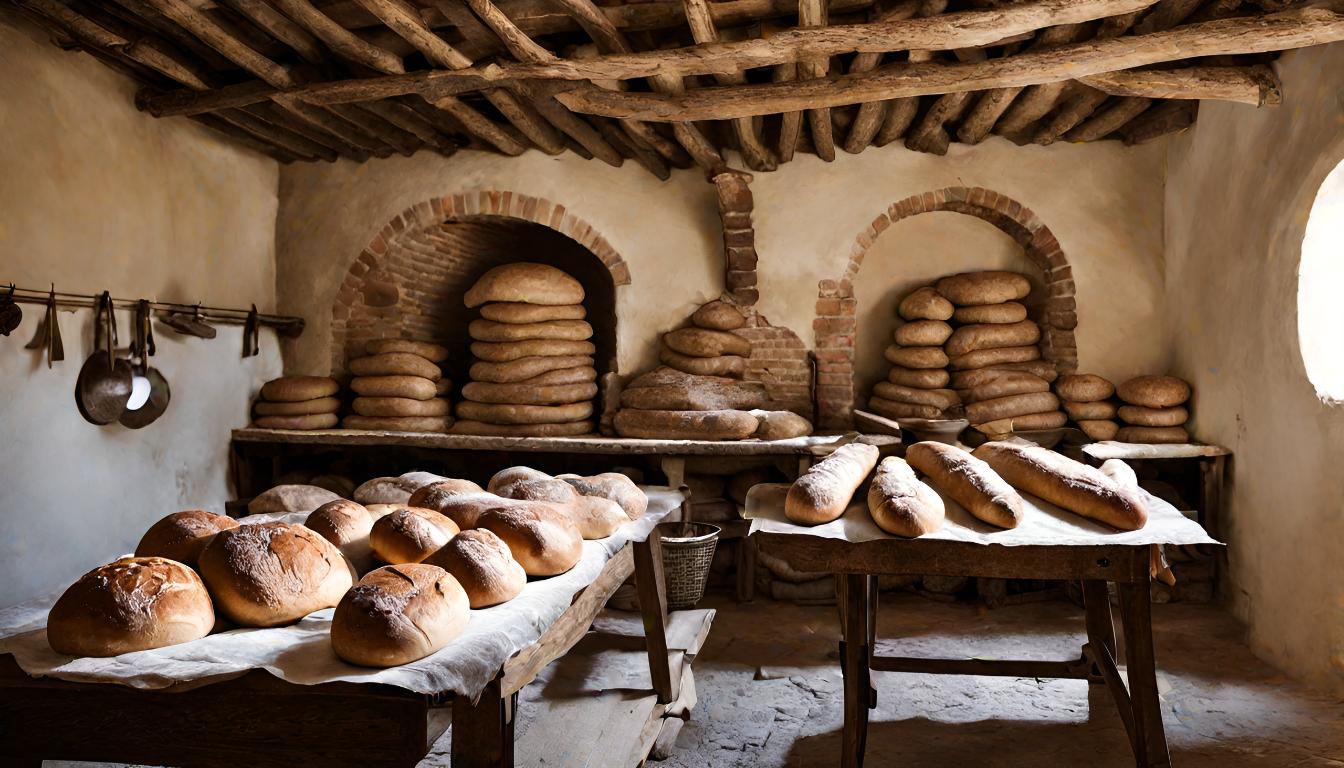
Ingredients and Preparation
Key Ingredients for Authentic Tuscan Bread
To recreate the authentic Tuscan bread experience, one must start with the right ingredients. The simplicity of this bread lies in its basic components: flour, water, yeast, and a notable absence of salt. The traditional recipe calls for a specific type of Italian flour, known as ‘Tipo 00’, renowned for its fine texture and high quality. The choice of yeast, whether fresh or dry, also plays a crucial role in achieving the bread’s characteristic texture and flavor.
Step-by-Step Guide to Making Tuscan Bread
The process of making Tuscan bread is as much an art as it is a science. Here’s a simplified guide to bring this Tuscan staple into your kitchen:
- Mixing the Dough: Begin by dissolving yeast in warm water, then gradually mix in the flour to form a dough. The absence of salt might feel unconventional, but it’s essential to the authenticity of the recipe.
- Kneading: Knead the dough vigorously. This process is crucial for developing gluten, which gives the bread its structure and chewiness.
- First Rise: Allow the dough to rise in a warm place until it doubles in size. This step is vital for developing the bread’s texture and flavor.
- Shaping and Second Rise: Once risen, shape the dough into the desired form. Traditional Tuscan bread is often shaped into a round loaf. Allow it to rise again, further developing its flavor and texture.
- Baking: Bake the bread in a preheated oven until it achieves a golden-brown crust. The high temperature is key to creating a crisp exterior while keeping the inside soft and airy.
By following these steps, you can create a loaf of bread that is not only delicious but also carries the essence of Tuscan culinary tradition. In the next section, we will explore the various recipes and adaptations of Tuscan bread, showcasing its versatility in the Italian kitchen.
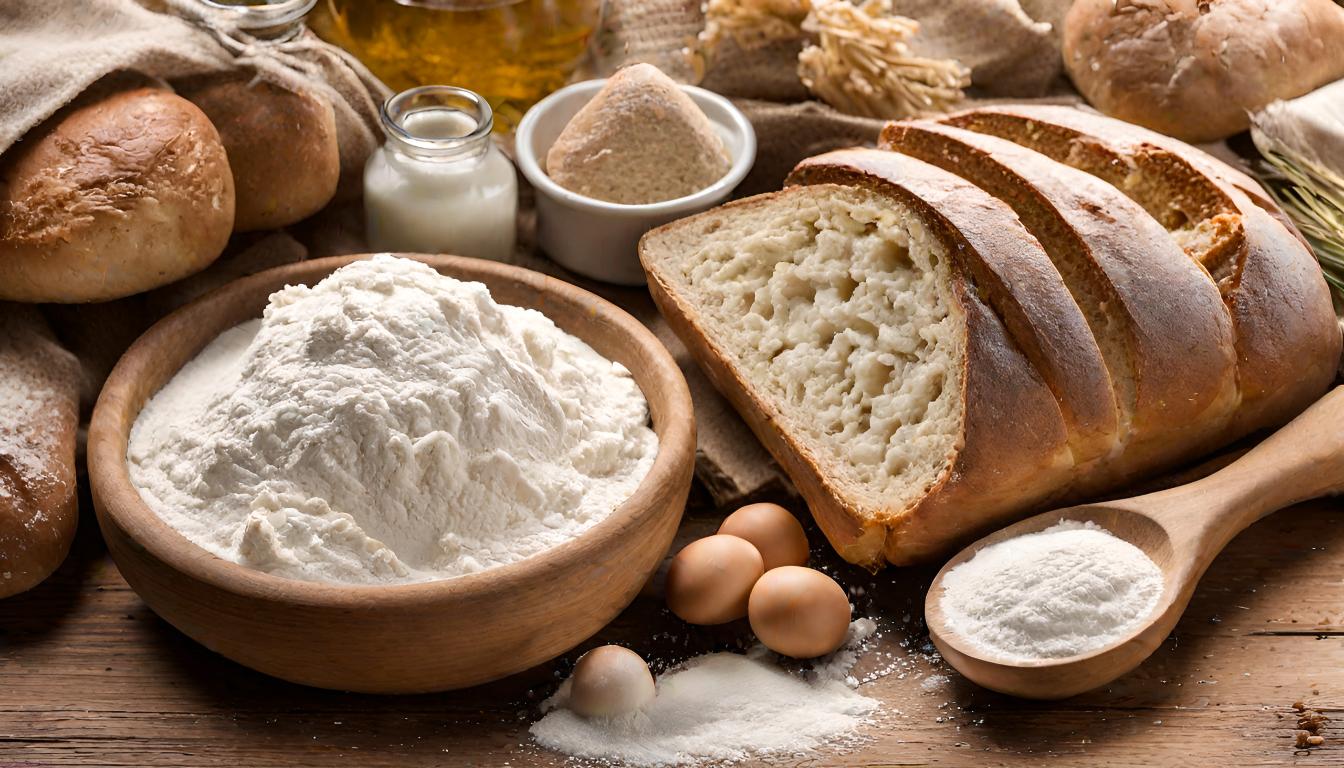
Variations and Recipes
Exploring Different Tuscan Bread Recipes
While the classic Tuscan bread is revered for its simplicity and unique saltless taste, various adaptations have emerged over time, each adding a distinct twist to the traditional recipe. These variations cater to different palates and occasions, showcasing the versatility of Tuscan bread in Italian cuisine.
One popular variation includes the addition of ingredients like rosemary or olives, infusing the bread with aromatic herbs or the savory taste of olives. Another adaptation involves incorporating whole wheat or spelt flour, offering a more rustic and hearty texture. These variations not only add flavor but also reflect the local ingredients and culinary preferences of different Tuscan regions.
Modern Twists on Traditional Tuscan Bread
In contemporary kitchens, Tuscan bread has been adapted to suit modern tastes and cooking techniques. For instance, some recipes now include a small amount of salt to cater to those who prefer a slightly seasoned taste. Others experiment with baking methods, using a Dutch oven or a bread machine to achieve a perfect crust and texture.
These modern twists on traditional Tuscan bread demonstrate its enduring appeal and adaptability. Whether sticking to the classic recipe or trying a new variation, Tuscan bread remains a beloved and versatile staple in Italian baking.
In the next section, we’ll delve into the culinary uses of Tuscan bread, exploring how it complements and enhances the flavors of various Italian dishes.
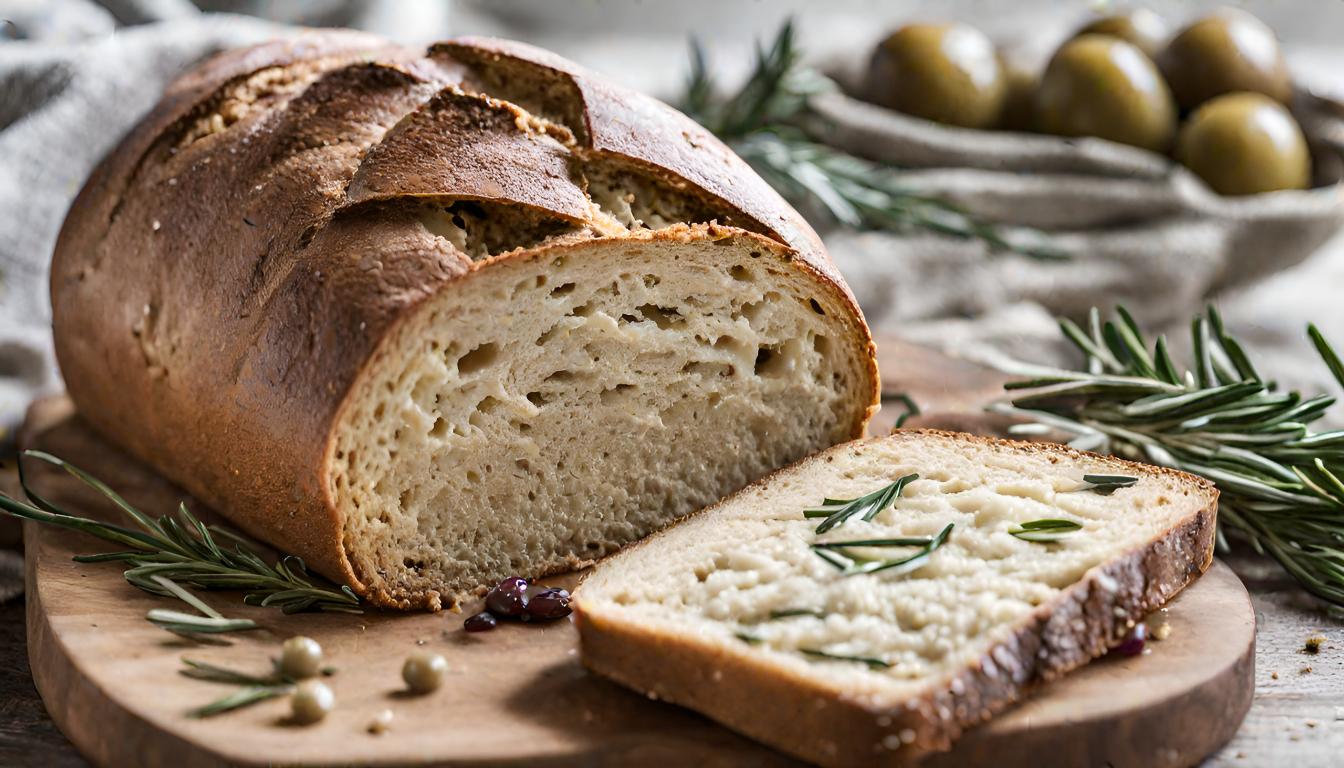
Culinary Uses
Tuscan Bread in Italian Cuisine
Tuscan bread is much more than a mere accompaniment; it’s a versatile player in the rich tapestry of Italian cuisine. Its neutral, saltless flavor makes it the perfect canvas for a variety of toppings and pairings. In Tuscany, it’s commonly used in traditional dishes like ‘Panzanella’, a refreshing bread salad made with ripe tomatoes, cucumbers, red onion, basil, and, of course, Tuscan bread soaked in olive oil and vinegar. Another classic dish is ‘Ribollita’, a hearty soup that features Tuscan bread as a key ingredient, soaking up the flavors of the vegetables and beans.
Pairing Tuscan Bread with Other Dishes
The beauty of Tuscan bread lies in its ability to complement both simple and complex flavors. It pairs wonderfully with robust Tuscan cheeses, cured meats, and is perfect for sopping up the rich sauces of traditional stews and pasta dishes. Drizzled with a high-quality extra virgin olive oil, it becomes a simple yet sublime snack. The bread’s dense texture and ability to absorb flavors make it an ideal choice for bruschetta, where it’s grilled and topped with a variety of toppings like fresh tomatoes, garlic, and herbs.
In the next section, we’ll explore the nutritional value of Tuscan bread and its place in a balanced diet, shedding light on its health benefits and how it can be enjoyed as part of a wholesome eating plan.
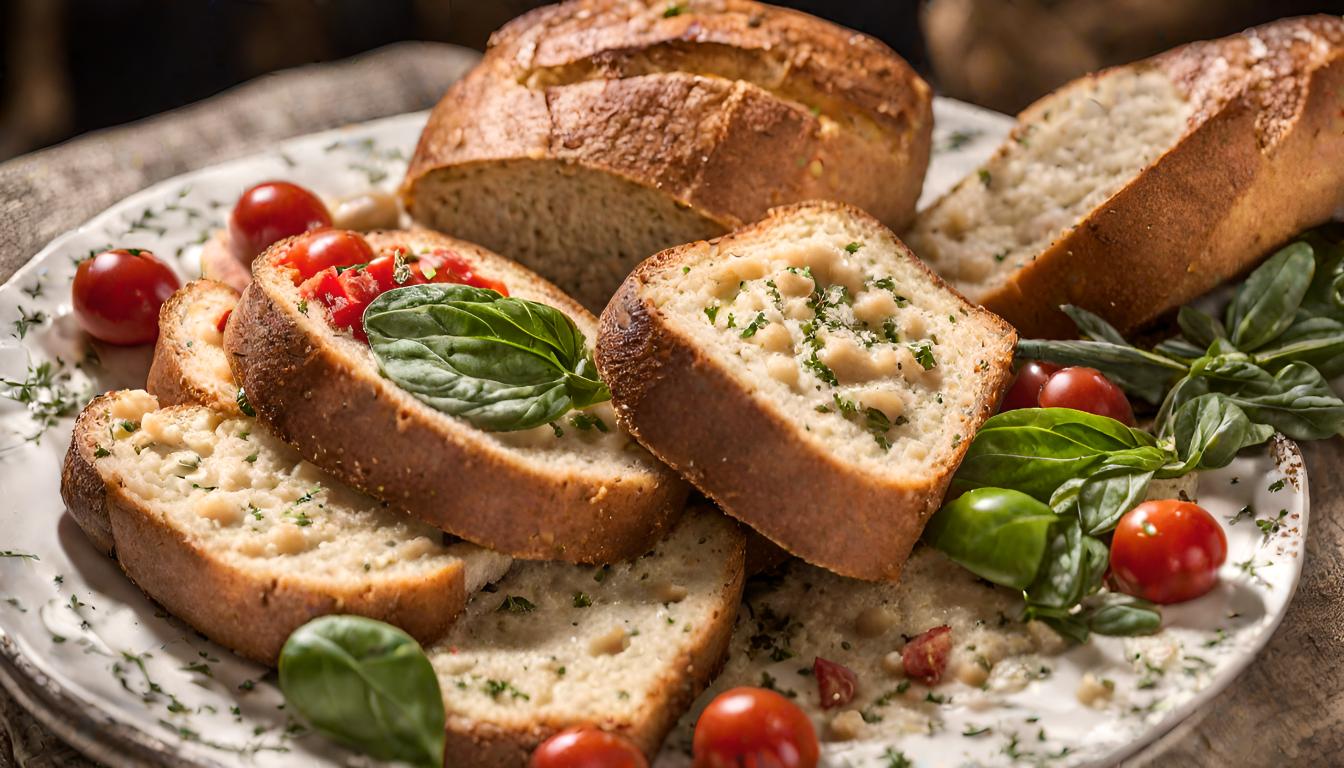
Nutritional Value
Health Benefits of Tuscan Bread
Diving into the nutritional profile of Tuscan bread, we find a food that is not only delicious but also offers several health benefits. Made predominantly from simple, unprocessed ingredients, Tuscan bread is a good source of carbohydrates, providing the energy needed for daily activities. Its salt-free nature is particularly beneficial for those monitoring their sodium intake. Additionally, when made with whole grains, Tuscan bread can be a good source of dietary fiber, aiding in digestion and promoting a feeling of fullness.
Tuscan Bread in a Balanced Diet
Incorporating Tuscan bread into a balanced diet can be both satisfying and healthful. Its versatility makes it easy to pair with a variety of nutrient-rich foods like vegetables, lean proteins, and healthy fats. For instance, a slice of Tuscan bread with a drizzle of olive oil and a side of grilled vegetables makes for a nutritious and balanced meal. However, as with all foods, moderation is key. Balancing the consumption of bread with other food groups ensures a well-rounded diet.
In the next section, we’ll address some frequently asked questions about Tuscan bread, providing insights and answers to common queries. This will help deepen our understanding of this unique bread and its place in Italian cuisine.
Frequently Asked Questions About Tuscan Bread
In this section, we address some common queries about Tuscan bread, offering insights that deepen our appreciation and understanding of this unique culinary item.
- Why is Tuscan bread made without salt?
- The tradition of making Tuscan bread without salt dates back to the Middle Ages, primarily due to the high salt taxes imposed at the time. This practice has since become a defining characteristic of the bread, deeply rooted in Tuscan culinary history.
- Can Tuscan bread be made with salt?
- While traditional Tuscan bread is saltless, modern adaptations sometimes include a small amount of salt to cater to different taste preferences. However, the classic recipe remains salt-free.
- What dishes pair well with Tuscan bread?
- Tuscan bread pairs beautifully with a variety of dishes, including traditional Tuscan soups like Ribollita, salads like Panzanella, as well as cheeses, cured meats, and olive oil for dipping.
- Is Tuscan bread suitable for a healthy diet?
- Yes, Tuscan bread can be part of a healthy diet. Its simple ingredients and salt-free nature make it a good choice, especially when balanced with other nutrient-rich foods.
- How long does Tuscan bread stay fresh?
- Tuscan bread, like most artisanal breads, is best enjoyed fresh, typically lasting 2-3 days. To extend its freshness, it can be stored in a bread box or frozen for later use.

Discover More Italian Culinary Delights
As we’ve journeyed through the rich tradition and versatile culinary uses of bread, it’s clear that Italian cuisine is a treasure trove of flavors and history. But the exploration doesn’t end here. Italian cooking offers a myriad of other delightful recipes and dishes that are waiting to be discovered.
For those who are captivated by the charm of Italian cuisine, the journey continues with other exquisite dishes. Dive into the savory world of Italian cooking with “Vesuvio Potatoes – A Culinary Journey” at Vesuvio Potatoes – A Culinary Journey, where you’ll explore another classic dish that embodies the essence of Italian flavors.
And for a sweet twist, don’t miss the “Lemon Blueberry Cheesecake – A Symphony of Flavors.” This dessert is a perfect example of how Italian cuisine seamlessly blends different tastes to create something truly extraordinary. Discover this delicious recipe at Lemon Blueberry Cheesecake – A Symphony of Flavors.
These links will guide you through more culinary adventures, offering a deeper appreciation of the rich and diverse world of Italian cooking. Enjoy the journey!

